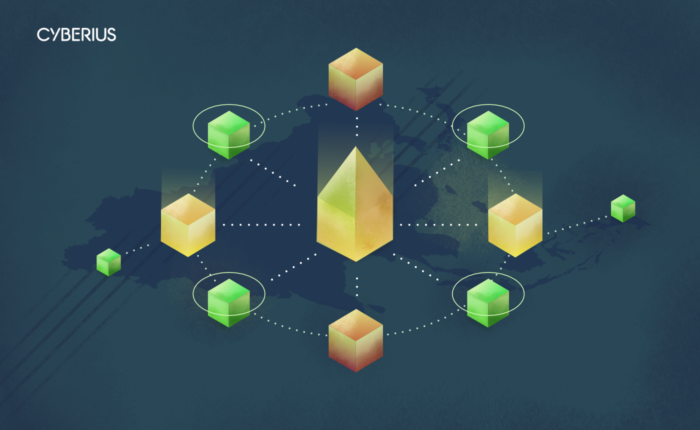What Is The Internet Of Things?
IoT (Internet Of Things) is a blanket term that refers to an environment where billions of devices globally are connected via the internet.
Simply put, IoT involves taking physical things in the world, and connecting them to the internet.

IoT is unique because it enables devices to communicate amidst each other by collecting and sharing data without the need for human interaction.
Thanks to advancements in internet connectivity coupled with microprocessors, anything from a small kitchen appliance to an industrial machine can be turned into an IoT device.
Internet Of Things Stock
Asia is a rapid growing economy currently categorized as the largest economy in both PPP (Purchasing Power Parity) and GDP in the world.
The economic position of Asia remains strong as the region continues to be the most dynamic among global economies.
Growth in the region can be primarily attributed to the wave of digital revolution currently sweeping across various industries.
From banking and manufacturing to transportation and retailing. Different Asian companies are exploiting advances in AI, big data, cryptography, robotics, and IoT to reshape the economy of the continent. Asia is making significant progress in digitization too with the continent occupying the first slot regarding industrial robot automation.
Asia is also set to lead the global trend towards IoT with an estimated 26% of companies in the region working on IoT-based projects. This is ahead of North America’s 23% and South America’s 22%.
Moreover, a large number of government initiatives are driving demand into the sector. For instance, the government of India intends to invest about $45-50 billion in deploying about 100 smart cities in the country over the next five years.
According to research firm IDC, the number of IoT devices is forecasted to rise from 3.1 to 8.6 billion by 2020, thereby creating a $583 billion market opportunity. A market that the Asian countries are aiming to dominate.
Growth In Popularity Of IoT
IoT is barely a new concept. However, for the past couple of years, it has gained massive traction and popularity around the world.
It has been proclaimed as the next global industrial revolution that will change almost all domains and spheres of life, bringing in a majority of benefits with it. Moreover, it’s predicted to play an essential role in the future as significant amounts of capital are flowing into the sector.
Its relevance today arises from the fact that it extends, compliments, and merges with other trending and powerful technologies in the world such as big data, open source, software-defined networking, and cyber-security.
Other reasons why IoT is gaining worldwide popularity include:
-
The Rise of IoT Enthusiasts
The number of individuals and communities with interest and zeal in IoT has drastically increased over the years with companies on the look-out to make IoT devices available to even more people.
-
Increase in Cloud-Based Services
Cloud-based applications have spurred the growth of IoT-based start-ups that are flourishing due to increased network connectivity and ease of use of IoT devices.
-
Internet Connectivity
Thanks to the internet, a lot more people are now connected to the internet and the devices around them.
-
Mobile Age
There is an outpouring of Internet-enabled smartphones that have come in as big trendsetters in the growth of IoT devices.

High-Tech Development in Asia Fuelled by IoT
-
Smart Cities
Asian cities are battling to become some of the world’s first smart cities. Various Asian governments are integrating IoT into their long-term development agendas.
A great example is India’s 2014 vision of transforming a hundred of their cities into smart cities. According to a government statement released in May 2018, about 1,333 projects under the smart cities program, totalling a whopping 506.26 billion rupees. They had either been completed or are in the implementation stage. Clearly, their smart cities vision has a long way to go.
China’s government also intends to pilot smart city projects into over 200 selected cities. Singapore is becoming more and more of a smart city, and Tokyo in Japan is as well.
Dubai of the UAE is also well underway in its efforts, with official government-backed projects such as Smart Dubai showing its seriousness.
-
Artificial Intelligence and Machine Learning
Asia is set to be on the frontline in the forthcoming AI revolution. So far, the AI market in the Asia Pacific was estimated to be around $450 million in 2017. The AI market is further expected to grow at an annual growth rate of 46.9% by 2020. China is the main contributor to AI and machine learning in the region driven by industry support and talent. As a result, China has emerged as the main competitor of the US in the AI development sector.
-
Fintech
Based on the number of start-ups and investments, Singapore is the undoubted leader of the fintech sector in Asia. It ranks high among the top cashless countries globally. More than 50% of its population participating in m-commerce and mobile usage.
Furthermore, demand for digital wallets in Singapore is at an all-time high as 60% of Singaporeans make online purchases. Collectively, the Asian region has good potential for fintech growth. It is highly fuelled by the high number of unbanked peoples in the Asian markets.
-
Internet of Things
According to data from Frost and Sullivan, the total spending in the IoT sector in Asia was $10 billion in 2014. The figure is expected to hit a high of $57.96 billion by 2020.
According to research firm IDC, Asia will be installing more IoT devices this year, spending a total of $291.7 billion in the IoT sector. This is an increase of about 12.1% compared to last year’s total expenditure of $260.1 billion. Of this year’s global spending in the sector, China’s expenditure in IoT will account for over 40%. This is making it the region’s leader in IoT spending.
Future of IoT in Asia
The world is on the edge of a new disruptive technology revolution through the growth of IoT. Nowhere is this transformative potential more evident than in Asia where multiple governments and firms are leveraging IoT. They are not only to create opportunities, but also to address challenges.
For instance, Singapore is harnessing the power of IoT to provide sophisticated e-government services in its quest of becoming a smart city. India as well is using IoT to facilitate its Unique Identification (UID) agenda of connecting billions of citizens to government services.
From smart grids to smart buildings, IoT is sweeping across Asia going way beyond consumer wearable devices. Many industries are leveraging IoT-enabled technologies to address and solve some of the resource and infrastructure challenges that plague them. With a majority of IoT technologies operational in the continent, Asia is poised for global IoT domination.
Get informative articles and infographics for your business to help grow your online community, and more. Contact us at: zaneta@cyberius.com.





Leave a Comment